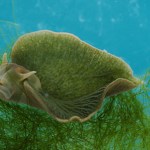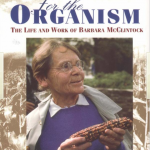genetics
Heritability of the Specific Cognitive Ability of Face Perception:
What makes one person socially insightful but mathematically challenged, and another musically gifted yet devoid of a sense of direction? Individual differences in general cognitive ability are thought to be mediated by "generalist genes" that affect many cognitive abilities similarly without specific genetic influences on particular cognitive abilities. In contrast, we present here evidence for cognitive "specialist genes": monozygotic twins are more similar than dizygotic twins in the specific cognitive ability of face…
For the past few decades there has been a long standing debate as to the origins of modern Europeans. The two alternative hypotheses are:
* Europeans are descended from Middle Eastern farmers, who brought their Neolithic cultural toolkit less than 10,000 years ago.
* Europeans are descended from Paleolithic hunter-gatherers, who acculturated to the farming way of life through diffusion of ideas.
The two extreme positions are not really accepted in such stark forms by anyone. Rather, the debate is over the effect size of #1 vs. #2. Bryan Sykes, a geneticist at Oxford, has been arguing for the…
Are Antarctic minke whales unusually abundant because of 20th century whaling?:
Severe declines in megafauna worldwide illuminate the role of top predators in ecosystem structure. In the Antarctic, the Krill Surplus Hypothesis posits that the killing of more than 2 million large whales led to competitive release for smaller krill-eating species like the Antarctic minke whale. If true, the current size of the Antarctic minke whale population may be unusually high as an indirect result of whaling. Here, we estimate the long-term population size of the Antarctic minke whale prior to whaling by…
One of the things about evolution you sometimes hear is that it has "stopped" for humans. Steve Jones, a British geneticist, is one of the more prominent public expositors of this viewpoint today. The key fact that most people latch on to is that infant and child mortality is very low, so the vast majority of humans reach the age of potential reproduction. Random genetic drift aside, evolution via natural selection does not necessarily need differential mortality as a necessary precondition (though this is obviously an efficacious mechanism from the viewpoint of evolution). All that needs to…
Researchers find clues to evolution by studying genes of living people. It's a profile of her group's composite test for natural selection.
A friend pointed me to this fascinating article about stray dogs in Moscow:
... It has become a symbol for the 35,000 stray dogs that roam Russia's capital - about 84 dogs per square mile. You see them everywhere. They lie around in the courtyards of apartment complexes, wander near markets and kiosks, and sleep inside metro stations and pedestrian passageways. You can hear them barking and howling at night. And the strays on Moscow's streets do not look anything like the purebreds preferred by status-conscious Muscovites. They look like a breed apart.
...
They also acted differently. Every…
New genetic loci implicated in fasting glucose homeostasis and their impact on type 2 diabetes risk:
Levels of circulating glucose are tightly regulated. To identify new loci influencing glycemic traits, we performed meta-analyses of 21 genome-wide association studies informative for fasting glucose, fasting insulin and indices of beta-cell function (HOMA-B) and insulin resistance (HOMA-IR) in up to 46,186 nondiabetic participants. Follow-up of 25 loci in up to 76,558 additional subjects identified 16 loci associated with fasting glucose and HOMA-B and two loci associated with fasting insulin…
Men who think that size really matters should probably not think too hard about the Y chromosome. This bundle of genes is the ultimate determinant of manliness, and it happens to be a degenerate runt. Over a few hundred million years, it has shrunk considerably, jettisoning around 97% of its original genes. Where it was once a large library of genes, now it's more a struggling independent bookstore. This loss of information defined the youth of the Y chromosome but nowadays, things are different. Renovation is the order of the day.
Jennifer Hughes from MIT revealed the recent history…
A week ago I pointed out that in some visualizations of world wide population variation South Asians & mestizos seem to overlap which each other to a great extent. The reason for this is that both populations can be modeled as admixtures between two separate, but related, populations. Mestizos are the products of pairings between Europeans and indigenous America populations, while South Asians seem to be a stabilized hybrid population which emerged from the fusion of a West Eurasian (closely related to European) and East Eurasian (distantly related to East Asians) populations. The East…
I am kind of obsessed with symbiosis and the idea that cooperation between different species can be a driver of evolutionary change. I learned about these symbiotic green sea slugs a while back from a colleague whose mom is a zoologist who studies the evolution of symbiosis between invertebrates and photosynthetic microorganisms. A review article from her lab beautifully introduces the amazing properties of Elysia chlorotica:
Faced with life without a protective shell in a predatory environment, some sea slugs evolved a protective mechanism dependent largely upon camouflage pro- vided by…
Tracking footprints of artificial selection in the dog genome:
The size, shape, and behavior of the modern domesticated dog has been sculpted by artificial selection for at least 14,000 years. The genetic substrates of selective breeding, however, remain largely unknown. Here, we describe a genome-wide scan for selection in 275 dogs from 10 phenotypically diverse breeds that were genotyped for over 21,000 autosomal SNPs. We identified 155 genomic regions that possess strong signatures of recent selection and contain candidate genes for phenotypes that vary most conspicuously among breeds,…
I just finished reading Evelyn Fox Keller's wonderful biography of Barbara McClintock, A Feeling for the Organism. Barbara McClintock was probably the best corn geneticist of all time and definitely one of the sassiest female scientists ever. In the 1940s and 1950s she discovered transposition, the process by which pieces of genes can literally jump out of one part of the chromosome and land back in another part. These jumping elements are controlled by master regulating elements in other parts of the genome and can turn different genes on and off at different times. This incredible discovery…
Check it out. Claims he'll do it weekly. More power to him, I feel a bit overwhelmed by all the social media stuff at this point (I'm sure I'm not alone), so anyone who is willing to human-filter the data gets my support.
The New Republic has published a review of the book The Invention of the Jewish People. There is a genetic aspect to the story:
But in fact we can go far back in time, with the help of historical DNA studies, which have burgeoned in the last twenty years, and the most disgraceful pages in Sand's book are those in which he displays an ignorant disdain for the work that has been done in this field by serious investigators. Without the least apparent understanding of how historical genetics works or what it can tell us, he attacks some of its most distinguished practitioners, such as Batsheva…
Weird but fun list, SNPedia's Top 10 SNPs of the Year:
SNPedia now contains nearly 10,000 SNPs and to welcome 2010 we'd like to highlight at least 10. These SNPs have been selected based on an elusive and ultimately subjective combination of medical importance, statistical believability, and overall general interest. This isn't objective science though, so feel free to comment about why your favorite SNPs should have made the list.
H/T Eye on DNA.
Update: Must read post from p-ter.
A Composite of Multiple Signals Distinguishes Causal Variants in Regions of Positive Selection:
The human genome contains hundreds of regions whose patterns of genetic variation indicate recent positive natural selection, yet for most the underlying gene and the advantageous mutation remain unknown. We developed a method, Composite of Multiple Signals (CMS), that combines tests for multiple signals of selection and increases resolution by up to 100-fold. Applying CMS to candidate regions from the International Haplotype Map, we localized population-specific…
In the aughts the elucidation of human pigmentation genetics was of one the major successes of 'omic' techniques. The fact that humans exhibit some continuous variation in complexion was strongly suggestive that more than one gene was at work to generate the range of the phenotype. On the other hand pedigree based studies going back to the 1960s suggested that only a modest number of large effect genetic variants were producing the variance. Today we can say with reasonable certainty that about half a dozen genes account for almost all the between population variation in pigmentation. For…
Meet your viral ancestors - how bornaviruses have been infiltrating our genomes for 40 million years
Cast your mind back 40 million years and think about your ancestors. You're probably picturing creatures that looked like a bit like today's monkeys, but they're only part of your family tree. To see your other ancestors, you'd have to whip out an imaginary microscope. Meet your great-great-great-etc-grandviruses.
The human genome is littered with the remains of viruses that, in ages past, integrated their genes into the DNA of our ancestors. They became a permanent fixture, passed down from parent to child. Today, these "endogenous retroviruses", or ERVs, make up around 8% of our genome.…
Last month I pointed to two papers on China genetics. Rereading a bit more closely, I stumbled upon a very curious PC plot. It shows the relationship of various continental populations on the first two principal components of variation genetically. Look at how Mexican Americans from Los Angeles compare to Gujarati Americans from Houston:
In world wide context South Asians and mestizos can be viewed as somewhat analogous; a stable admixture between West and East Eurasian elements. Of course, the "East Eurasian" ancestry of mestizos consists of the New World descendants of Paleolithic…
Apparently there'll be a new Skip Gates documentary on personal genomics on PBS, Faces of America.

